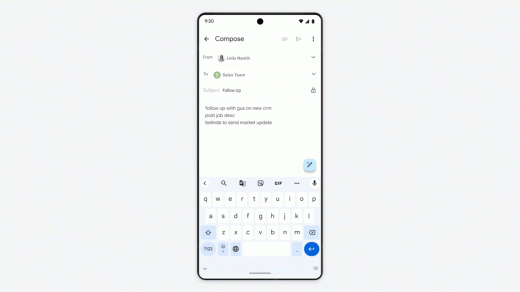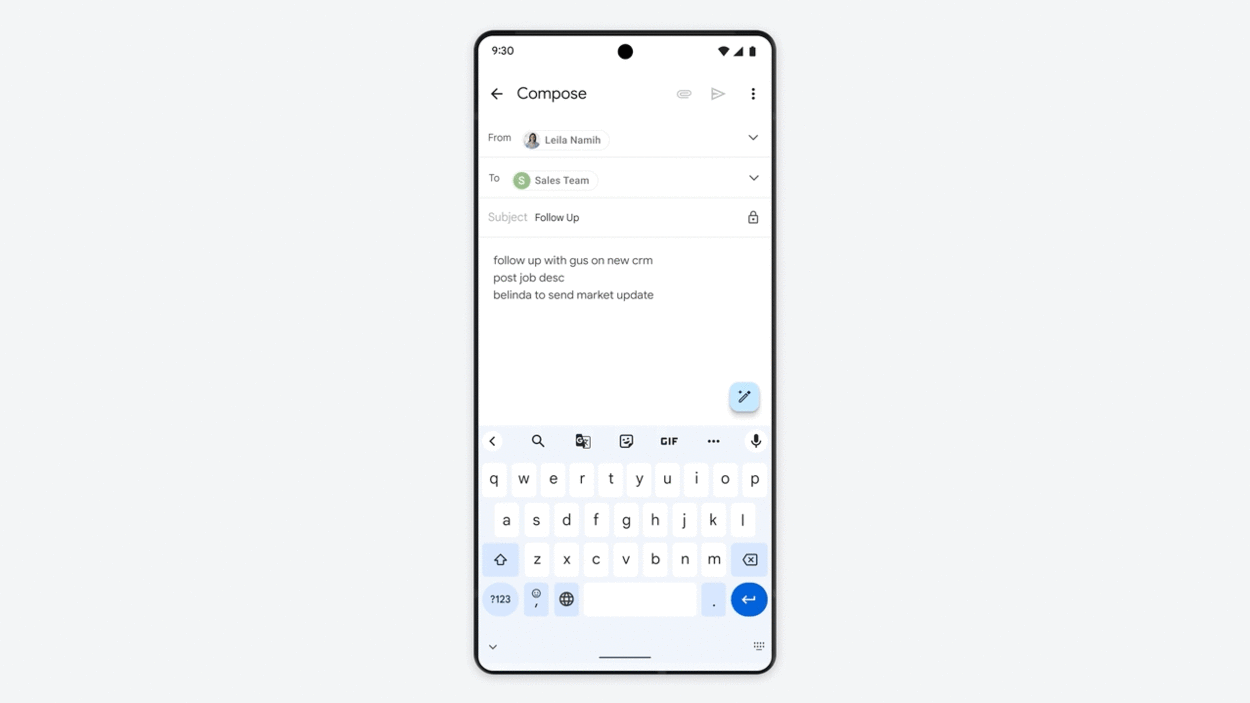Gmail’s AI can now write emails for you
Google isn’t quite ready to let everyone use generative AI in apps like Gmail and Docs, but it’s allowing anyone to try it out.
After a couple of months of private testing, Google is opening up a waitlist for its Workspace Labs program and generative AI features, which the company is calling “Duet AI for Workspace.” Using simple text prompts, users will be able to draft Gmail messages, write form letters in Docs, create images in Slides, and generate table templates in Sheets.
The actual AI capabilities aren’t much different from what’s already possible with other generative AI software, such as OpenAI’s ChatGPT and Dall-E. They’re also fairly similar to what Microsoft is doing on the productivity front with Copilot, which is powered by the same tech as ChatGPT.
Google, however, is in a position to put generative AI in front of many more people, simply by virtue of how popular its Workspace apps are. In other words, get ready for a lot more email to be cowritten by a machine.
When do Google Workspace’s AI features arrive?
Google already announced many of its Workspace AI features back in March, when it started bringing in “trusted testers” to try things out. The company’s using its I/O conference this week to demo a few new capabilities, clarify launch timing, and open up its waitlist to the public.
The first feature out of the gate for public testers will be AI responses in Gmail, both on the web and in Gmail’s mobile app. Users will be able to click a “Help me write” button, which can then formalize, shorten, elaborate, or rephrase any text they’ve already written. Later this month, Gmail will be able to draft replies based on the context of what the sender wrote (similar to a feature Grammarly launched last month).
Google Docs will also open up AI features for public testing this month. This will allow users to generate text with simple prompts, then modify or rephrase the output with follow-up commands. A proofreading feature will also arrive in the “coming months,” with suggestions on tone, conciseness, and repetitiveness.
As for Google Sheets, it’s getting a “help me organize” feature next month that can turn text prompts into table templates. Google says this can be useful for creating project planners, activity schedules, or task lists. In the coming months, users will be able to label items in a spreadsheet, then have Duet apply that label to other items that look similar.
Google’s looking to add image generation to parts of Workspace as well. Google Slides will get an AI image creator for public testers next month, and Google Meet will get a background generator for video chat in the “coming months.”
One thing Google hasn’t confirmed yet: pricing. Generative AI requires a lot of processing power, and the costs are high. Google says that it’s still working on a pricing model, but that everything will be free during the testing period.
A slow and steady approach
As of now, the most notable thing about Duet AI for Workspace is how gradual the rollout is. Instead of making AI the focal point of products like Docs and Sheets, Google’s adding it in bite-size pieces over several months.
Aparna Pappu, Google’s vice president and general manager for Workspace, says the company’s goal is to introduce generative AI in a way that helps people understand how to use it. In Google Slides, for instance, the company noticed in early testing that people often used text prompts to modify the style of their images, so it added a drop-down box with popular art styles to choose from.
“Helping users interact and engage to get the most out of the AI models is how we’ve designed these products,” she says.
Google also hopes generative AI will help people learn more about Workspace as a whole. For example, when creating a table template in Slides, Duet AI can create placeholder “Smart Chips,” which are Google’s term for interactive elements inside of Workspace. These can include things like addresses with pop-up info from Google Maps or live previews of other documents.
“This helps the user to realize, ‘Oh wait a minute, I could’ve put a Smart Chip in here,’” Pappu says. “And now it’s not just numbers and text, it’s actually structured data that I can connect to other sources.”
All of this ties into Google’s longer-term vision for Duet, which involves analyzing data from across users’ documents to create new content or insights. The ability to bulk-label items in a spreadsheet is an early example, but Pappu says that in the future, you may be able to generate a speech or essay based on content stored across multiple documents, files, or notes.
“The models that we run on are so capable that we can do a lot more than text,” she says. “We can do a lot of synthesis. We can do a lot of analysis.”
Google’s near-term features aren’t nearly as ambitious, but maybe that’s okay. While the company won’t specify how often its early testers are using generative AI features, Pappu suggests that they’ve been pretty popular. Officially, the company says people have used its existing AI-assisted writing tools—that is, things like Smart Reply in Gmail and spell checking in Google Docs—more than 180 billion times in the past year. It’s framing generative AI as a natural extension of the AI assistance it already offers.
“When done well, it’s used enormously,” Pappu says.
(16)



